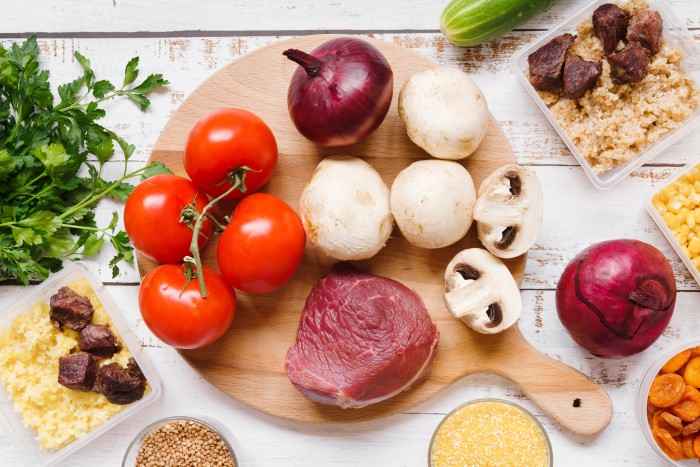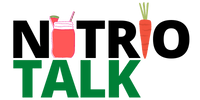Iron Absorption in Vegetarians: Boost It Naturally
By NutrioTalk
Introduction: Why Iron Matters
Iron is a vital trace mineral that supports oxygen transport (via hemoglobin), energy production, brain development, and immune function. Despite its importance, iron deficiency is one of the most common nutritional issues worldwide, affecting over 25% of the global population—especially women, children, and those following vegetarian or plant-based diets.
While vegetarians often eat iron-rich foods, the type of iron in plants (non-heme iron) isn’t as easily absorbed as the heme iron found in animal products. That’s why it’s important to understand how to boost non-heme iron absorption to prevent deficiency and stay healthy.

Understanding Iron: Heme vs. Non-Heme
• Heme Iron: Found in animal foods like red meat, poultry, and fish. It’s easily absorbed by the body (15–35% absorption rate).
• Non-Heme Iron: Found in plant-based foods like legumes, grains, nuts, and leafy greens. It’s less efficiently absorbed (2–20%) and more influenced by what else is in your diet.
Quick Insight: Since vegetarians rely solely on non-heme iron, learning how to improve its absorption is crucial.
Plant-Based Iron Sources
Vegetarians have access to many wholesome, iron-rich foods:
• Legumes: Lentils, chickpeas, black beans
• Leafy Greens: Spinach, kale, Swiss chard
• Seeds and Nuts: Pumpkin seeds, hemp seeds, almonds
• Whole Grains: Quinoa, oats, brown rice
• Fortified Foods: Breakfast cereals, plant-based milks
• Dried Fruits: Raisins, apricots, prunes
Example in Everyday Life: One cup of cooked lentils packs around 6.6 mg of iron—almost 40% of the daily recommended intake for adult women.
What Can Hinder Iron Absorption?
1. Phytates: Found in whole grains and legumes; they bind to iron and make it harder to absorb.
2. Oxalates: Present in foods like spinach and beets; they also reduce iron absorption.
3. Polyphenols: Found in tea, coffee, and cocoa; they interfere with iron uptake.
4. Calcium: Competes with iron for absorption in the gut.
5. Low Stomach Acid: Makes it harder for your body to absorb iron efficiently.
Helpful Tip: To get the most out of your meals, try not to drink tea, coffee, or take calcium supplements right before or after eating iron-rich foods.
Simple Ways to Boost Iron Absorption
• Add Vitamin C: Foods like citrus fruits, bell peppers, and strawberries can help your body absorb more iron.
• Soak and Ferment: These prep techniques lower phytate levels in legumes and grains.
• Use Cast Iron Cookware: It can naturally increase the iron content of your meals.
• Separate Calcium: Avoid having high-calcium foods or drinks with your iron-rich meals.
Real-World Story: A 30-year-old vegetarian struggling with low ferritin levels improved significantly over 12 weeks by adding lemon juice to lentil dishes and swapping her lunchtime tea for orange juice.
When Supplements Might Be Needed
Certain people may need extra help getting enough iron:
• Pregnant women
• Menstruating females
• Athletes
• Teenagers
• People with digestive issues
Types of Supplements
• Ferrous Sulfate: Common and affordable, but may cause stomach upset.
• Ferrous Bisglycinate: Easier on digestion and well-absorbed.
• Iron Polysaccharide: Gentle and with fewer side effects.
Smart Choice: Choose vegan-friendly iron supplements and get your levels checked to avoid overdoing it.
How to Test for Iron Deficiency
• Hemoglobin: A basic test for anemia.
• Serum Ferritin: Best indicator of your iron storage levels.
• Transferrin Saturation (TSAT): Shows how much iron is being carried in your blood.
Pro Tip: Ferritin levels under 30 ng/mL usually mean your iron stores are running low—even if your hemoglobin is still within range.
Clearing Up Some Common Myths
1. “Spinach is the best source of iron”: It’s high in iron, yes—but also in oxalates, which block absorption.
2. “Vegetarians can’t get enough iron”: Not true. With the right strategies, plant-based diets can meet your iron needs.
3. “Only meat-eaters need to worry about iron overload”: Too much supplemental iron without proper testing can affect anyone, including vegetarians.
Latest Trends & What Lies Ahead
• Fortified Foods: Look for iron-enriched plant milks and breakfast cereals.
• Biofortified Crops: Researchers are developing iron-rich versions of staple crops like beans and rice.
• Personalized Nutrition: Apps and home test kits are making it easier to track your nutrient levels.
Global Snapshot: Countries with large vegetarian populations, like India and the UK, are investing in education and fortified food programs to fight iron deficiency.
Key Takeaways
• Iron is essential, and vegetarians need to pay special attention to how they absorb it.
• You can improve absorption with food pairings, preparation methods, and smart supplement choices.
• Regular blood tests help ensure your strategy is actually working.
Final Thoughts
Iron absorption might seem tricky—especially if you follow a vegetarian diet—but it doesn’t have to be overwhelming. With a little knowledge and the right approach, you can confidently meet your iron needs, support your health, and stick to your plant-based lifestyle.

